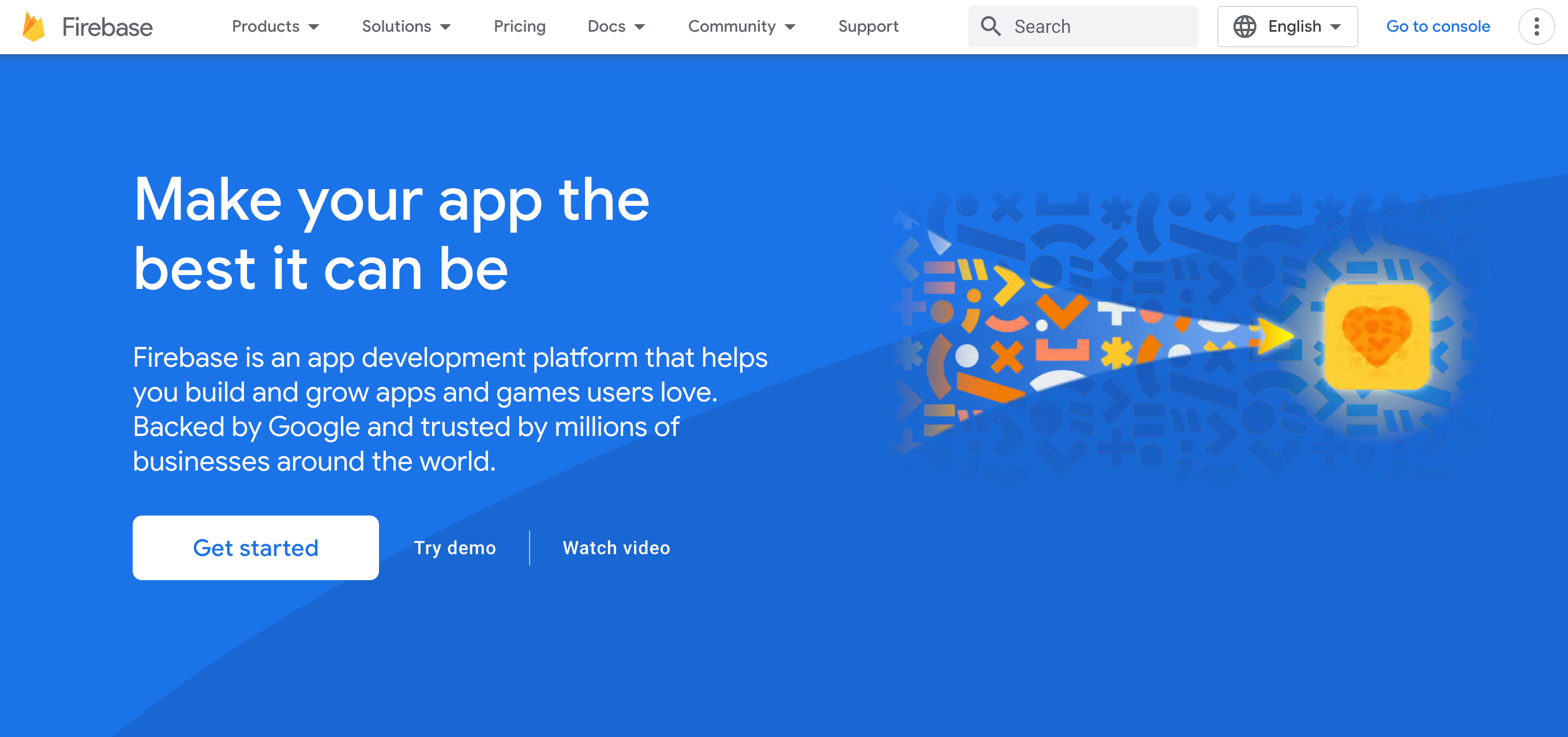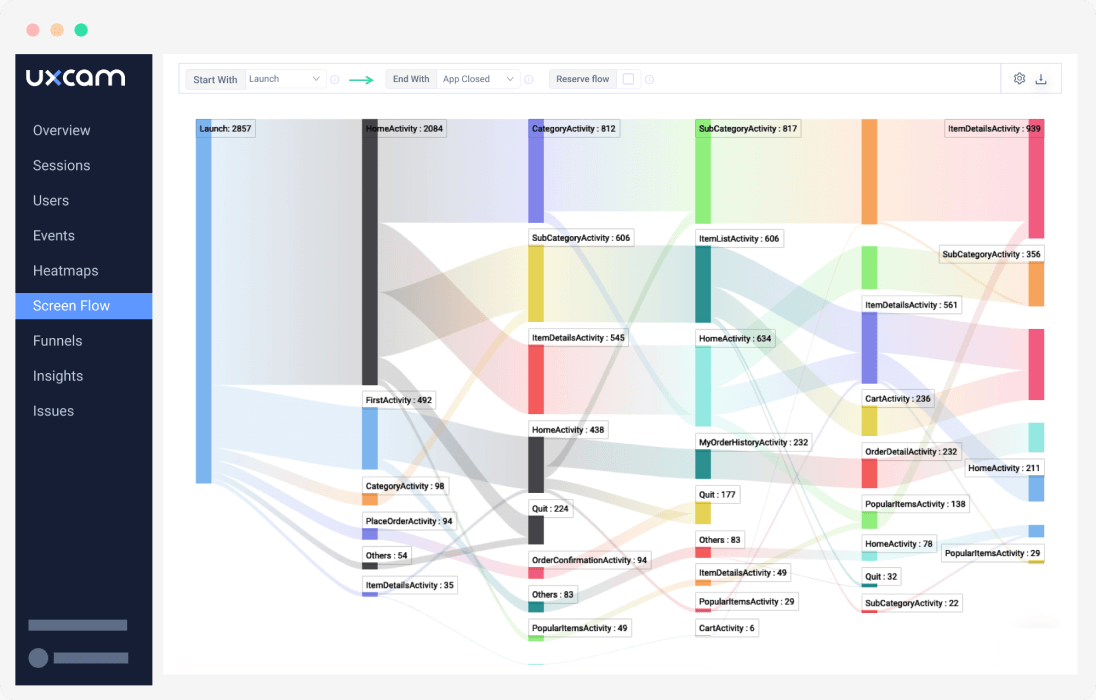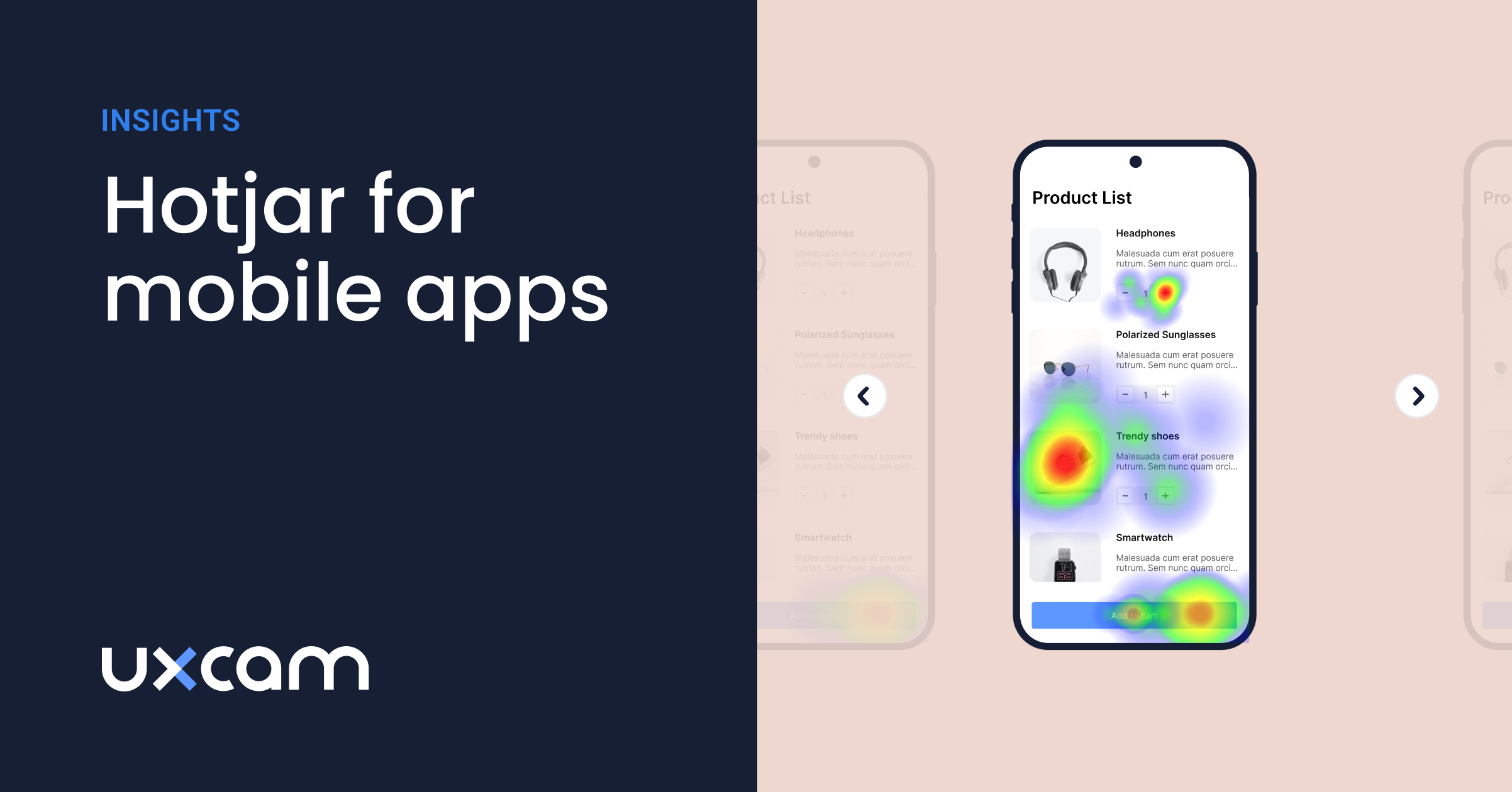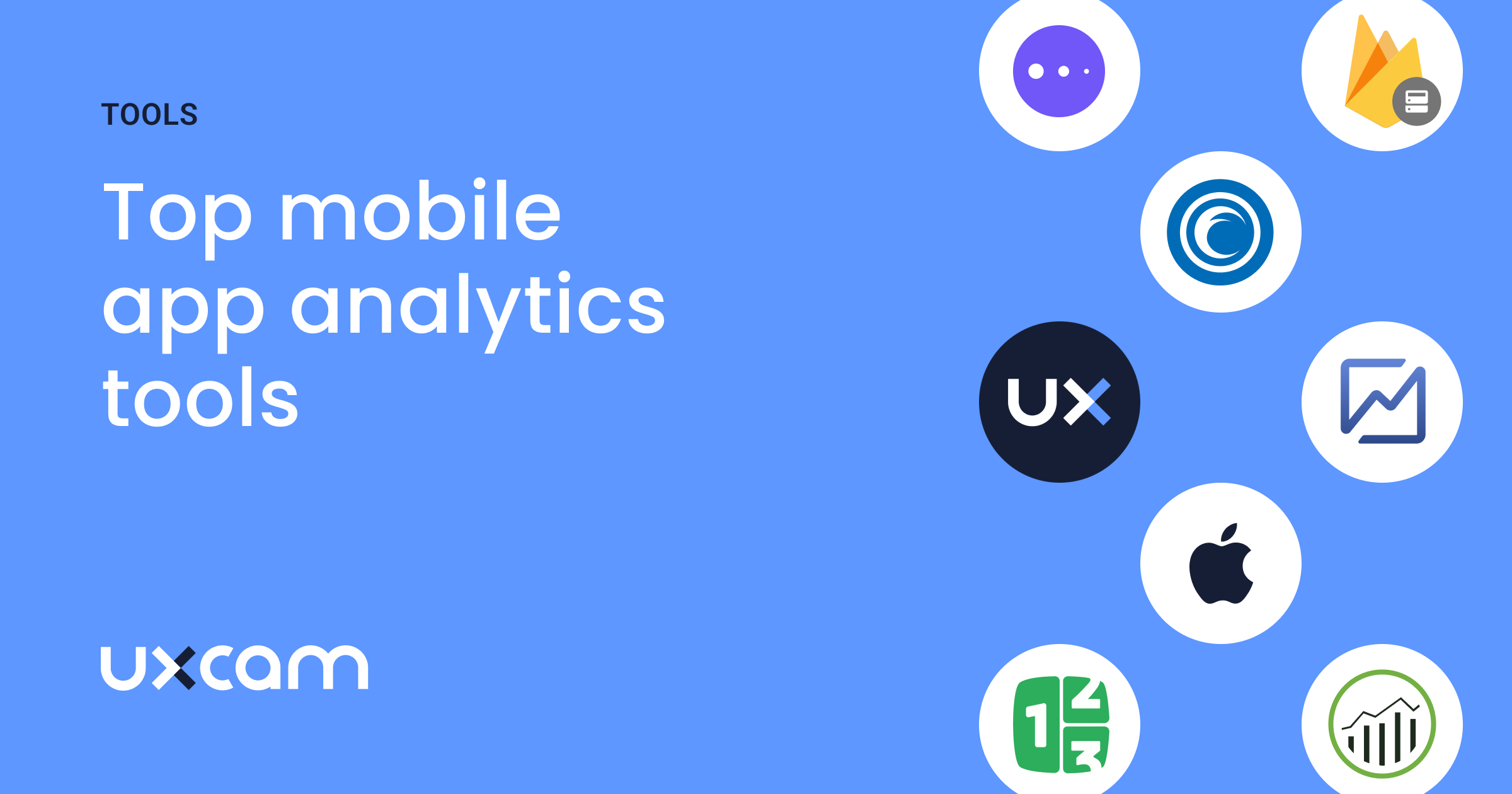How to Use Mobile App Funnel Analysis to Convert More Users
PUBLISHED
14 June, 2023

Growth Marketing Manager
How many of your users exit your app before converting? If your answer is: "Too many!" don't worry; you're not alone. According to studies, the average cart abandonment rate is pretty high at 69.99%. Fortunately, you can use mobile app funnel analysis to understand what's causing users to give up before achieving their goals.
At UXCam, we understand the importance of having a 360-degree view of complex user journeys and discovering areas with the most growth impact. 37,000+ mobile app brands agree and use our tool to identify friction points and develop a deep understanding of their users.
Today we examine how mobile app analytics can be used to deliver more profitable apps and how UXCam helps.
What is mobile app funnel analysis?
Mobile app funnel analysis can assist you in regards to user journey mapping to determine how many follow a defined process to complete conversion goals—for example, downloads or subscription upgrades.
It focuses on the steps that lead to conversions and confirms how far users get within each funnel stage, allowing you to identify key drop-off points which are preventing them from converting.
With this information in hand, mobile app teams are able to make changes in-app in order to bump up user conversions and retention. Simple, right?
Different mobile app funnel analysis tools
UXCam
UXCam is a product and experience analytics, that allows teams to understand their users on a granular level. Product teams can quickly create multi-step funnels and access segmented data of how users interact and move through an app in order to complete their objectives.
To complement the funnel analysis feature, we also provide easy customer segmentation so that you can identify trends and hidden behavior patterns easily and the key behaviors which influence conversions.
CleverTap
CleverTap is a mobile marketing tool to support marketing teams in creating personalized engagement strategies to increase growth. Using real-time insights, campaigns are activated based on user behavior.
Firebase
Firebase is an app development tool with functionality to boost engagement through app customization for different user segments.

Why is mobile app funnel analysis important?
Identifies conversion blockages - Product teams will be able to identify the pages or issues which are preventing users from completing conversions, allowing them to provide fixes to remove these blockages.
Gain lots of valuable insights - This is a biggie, as insights on user behavior will help guide any improvements you make to your app. Without the proper insights, you might implement changes or features that weren’t needed or valuable to your customers.
Promotes re-engagement - Users prefer brands that listen to them and make changes based on their feedback or frustrations, and this includes users who drop off. If these users see that you’re dedicated to making improvements to your app, they’ll be much more likely to give you another try!
How to use mobile app funnel analysis to convert more users
1. Identify the key performance indicators (KPIs)
Mobile app KPI metrics can tell you a lot about your app's technical and marketing performance and are significant in an app's growth.
The mobile app industry categorizes app KPIs into the following 3 groups.
UX and performance metrics
This data helps you to uncover in-app performance issues such as slowness or bugs; metrics include:
Crash reports
Devices and operating systems (display what your audience is using)
Load speed
Engagement KPI metrics
These track people's in-app engagement to understand whether their experience is satisfactory through interactions. Engagement KPI metrics include:
Retention rate
Active users (daily, weekly, and monthly)
Stickiness ratio
Churn rate
Revenue metrics
This is all profit gained from your app and money spent on activities such as acquiring new customers. Here are some revenue KPI metrics to consider:
Time to first purchase
Conversion rate
Average revenue per user
User lifetime value
2. Use segmentation and comparison funnels for deeper insight
Never forget that all your customers are unique. For instance, even those that purchase the same or similar items appear to have identical or similar in-app behavior.
Mobile app user segmentation and comparison funnel analysis will answer questions like:
whether your US and Asian customers follow different paths
whether male customers convert quicker than female
whether a particular journey results in higher conversions
Perhaps your customers aged 20+ convert quicker than your 40+ customers but also churn at a higher rate while your 40+ customers become repeat buyers.
The data here is vital for mobile app managers when making app development decisions.
3. Identify key touch points for conversions & high-converting customer sources.
Your customers may have different goals and use other methods to achieve the same goal. They will navigate and interact with touch points in different order. For example, when searching for an item, User A may enter the item name, while User B will start searching by item type. User A may create an account at the start of interactions, while User B may create one after several guest uses.
Consider all the routes your customers may take to reach the conversion point and how many steps it takes. Identifying what works throughout the funnel is as valid as what doesn't. As a result, the design concepts used for the parts that get good results can be applied to the area that needs help.
Marketing funnel analysis examples
The following funnel analysis examples show the percentages of users that reached each step in the funnel for an idea of the type of questions you can answer.
Question: How many users complete the checkout process?
Answer: Less than half of customers who add products to their cart begin and complete the checkout process. In a scenario like this, teams must investigate what's preventing users from purchasing.
Question: How many new users complete onboarding?
Answer: New users typically drop off at onboarding screens 1 or 2. An issue like this can be fixed by running an A/B test with a shorter version of the process.
4. Use a reliable mobile app analytics tool
UXCam is the leading tool for mobile app analytics. To develop empathic apps, it arms mobile product teams with 360-degree insight into the user journey. We deliver a comprehensive mix of metrics and behavior analysis data.
With UXCam, your teams get actionable behavior metrics to understand your customers better. You can create multi-step funnels and see for yourself precisely where your customers drop off with session recordings.
Then take your mobile app journey analysis to the next level by identifying hindrances and unusual in-app behavior patterns for segmented customers. Access the functionality required to increase conversions, adoption, and customer satisfaction.

5. Craft an optimization plan
Following your funnel analysis, you'll know which touch point needs optimizing. The areas with the highest drop-off rates should be prioritized first. Consider the following about your unique customers in enhancing UX for more conversions:
What motivates them to use your app and convert
What’s preventing them from converting
How can you help get them to the end of the conversion process
And for highly effective in-app optimization, you'll also need to consider the following:
How can you give all your customers what they want at each funnel phase? Your segmented data behavior metrics can assist here as they help in identifying the common likes and dislikes with each group so you can tweak your design to address preferences.
How do people learn about your brand and engage with your app?
Whether the conversion process is easy? Are their questions answered in-app?
Depending on the obstacles found in your analysis, consider improving features like:
FAQ pages
Search options and filters
Product descriptions and photos, and videos
Check for broken elements
6. Test, optimize, and iterate
Once you've implemented your changes, run a beta test with a small group. Then perform another funnel analysis and make the necessary changes until your KPIs improve.
Funnel analysis, tweaks, and monitoring of user behavior will be an ongoing iterative process for optimized retention and conversions.
Use UXCam for your mobile app growth strategy
Mobile app funnel analysis visualizes the different stages of your user's journey to achieving their goals. The data helps you make better design decisions by highlighting where users get to in a conversion funnel and which areas of the process work well.
UXCam delivers reliable quantitative and qualitative data so you see where the friction points are and understand why they're problems. Our lightweight SDK uses cutting-edge technology to collect the necessary app session details without affecting the UX.
See why the world's leading mobile brands always trust UXCam by starting a free trial today.
Related Articles
Funnel Analysis Examples: How to Improve App Conversions
Top Seven best funnel analytics tools
AUTHOR

Tope Longe
Growth Marketing Manager
Ardent technophile exploring the world of mobile app product management at UXCam.
What’s UXCam?
Related articles
App Analytics
The Hotjar for mobile apps: UXCam
Read on to learn about the best Hotjar alternative for native mobile apps (Android and iOS) and hybrid apps. Here's how to get heatmaps and session recordings for your mobile...

Audrey Meissner
App Analytics
Top 19 Mobile App Analytics Tools in 2025
Choosing the best mobile app analytics tools and platforms for your app can be overwhelming. We did the research, so you don't have...

Jonas Kurzweg
Growth Lead
App Analytics
Amplitude React Native Integration Review & Best Alternative
Explore how to set up Amplitude React Native, read expert reviews, and discover the best alternatives for optimizing your mobile...

Tope Longe
Growth Marketing Manager

